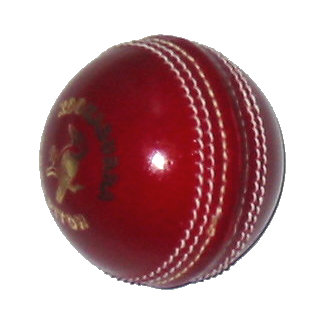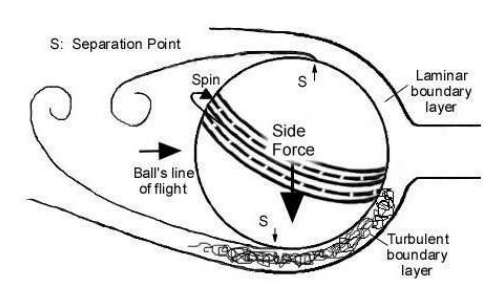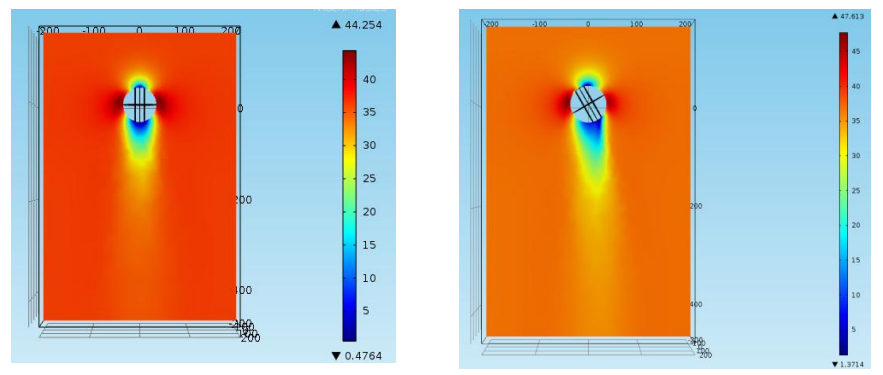
Cricket is the second most popular sport in the world, but it’s also considered an art. This is seen in the technical abilities required by the batsman to protect his wicket and go on to score runs. It’s also due to the type of bowling used to get the batsman out, which depends on a myriad of physical factors. Here, we investigate one of these techniques — the art of swing bowling.
Swing Bowling – an Essential Component in Your Bowling Arsenal
Growing up during the 80’s, I was an avid follower of a rather unassuming bowler, Terry Alderman, who was also called the King of Swing. He wasn’t one of Australia’s more famous or best bowlers, except when he played against England on their home turf. With 40 test matches to his name, Alderman took almost half of his career wicket tally during two 5-match series in 1981 and 1989 in England (these series are known as The Ashes).
A cricket team’s bowling arsenal often contains four or five players that would master different styles of bowling. Apart from the inclusion of either a slow-paced leg or off-spin bowler, most of the arsenal would bowl at a pace of between 60-100 mph (about 100-160 km/hr). In order to make things difficult for the batsmen, the arsenal would deviate the flight of the ball by “swinging” it through the air, from one side to the other, or “cutting” it off its seam when the ball “pitches” or bounces on the wicket in front of the batsman (you can learn more about that here).

A new cricket ball showing the stitching that makes up the seam.
Being able to swing the bowl relies on the condition of the ball, as well as the general atmospheric conditions you are playing in. If the conditions are more humid, then it’s easier to swing the ball. This is why England is a paradise for swing bowling and why a swing bowler is often employed at the start of day before conditions have dried out too much.
During the match, the condition of the ball deteriorates as it is being hurled into the ground at great speed and hit by the bat at even greater speed (typically, a ball will be used for 90 overs of 6-ball overs). The players in the bowling side would concentrate on polishing one side of the ball through rubbing it on their clothes and applying moisture like sweat, while letting the other side roughen up.
Early on in the life of the ball, conventional swing is the preferred bowling style, which I will discuss below. A relatively new phenomenon introduced by some of Pakistan’s bowlers during the 80’s is a technique called reverse swing. Together with the condition of the ball, the pace at which it is bowled determines whether the ball is more susceptible to conventional or reverse swing. How the ball is held in the hand and the angle to which the bowler places the seam when the ball is released together determine whether the ball will swing “in” or “out”.
All of these techniques can be described by aerodynamics and simulated with CFD software.
Simulating the Science of Swing Bowling
A great explanation of the different styles of swing bowling and the aerodynamics associated with them was written by NASA scientist and former pace bowler Rabindra Mehta.
In his diagram below, you can see that the separation of the boundary layer from the ball’s surface occurs at a position closer to the back of the ball, on the side where turbulence is created by the seam, as compared to the side where the air is not influenced by the seam. The side downstream from the seam receives a turbulent boundary layer, while the other side is influenced by a laminar boundary layer.

The science of swinging a cricket ball. Turbulence is created by the seam and the roughness of one side of the ball. This moves the separation point and creates a force that causes the ball to move, or “swing”, in the direction of the rough side. Image taken from “Fluid Mechanics of Cricket Ball Swing“, and provided courtesy of Dr. Rabindra D. Mehta.
The average speed of the air flowing in the turbulent boundary layer is greater than the speed in the laminar boundary layer, since the position of the separation point creates a longer path for the air in the turbulent boundary layer to travel. This imposes a side force in the direction of the turbulent side, which creates swing.
In older balls, the effect of the seam is slightly reduced, as one side of the ball is roughened up. On the rough side of the ball, stationary air in the scratches and grooves lowers the shear forces on the rough side of the ball, which also results in moving the separation point further back on the ball. The air on the rough side travels a longer path compared to that on the smooth side, providing a velocity difference that creates a side force and the corresponding swing.
This phenomenon is similar to the Magnus effect, which we blogged about a while back in relation to providing swing to the flight of a soccer ball. It is also similar to how a wing works, where the higher speed of air over the curved upper surface of the wing, compared to the lower surface, creates a lift force (read more about computing lift and drag here).
Cricket Research Presented at the COMSOL Conference
It’s been a while since the 80’s and I haven’t seen much cricket since I moved from Australia to the United States. However, this all came back to me during the COMSOL Conference in Boston last month, where I met a young undergraduate student and researcher from The University of the West Indies in St. Augustine Trinidad & Tobago. (By the way, the West Indies had a phenomenal pace attack during the 70’s and 80’s that tormented batsmen throughout the world.)
At the conference, Richie Latchman presented both a paper and a poster on his and Akash Pooransingh’s simulations of the fluid mechanics of conventional swing bowling. Considering a completely new ball, where turbulence occurs due to the perturbation in flow caused by the seam, they were able to model the forces that create conventional swing at different velocities. Their results compare well with experimental results.

Results from two 3D simulations of the fluid flow past a cricket ball. Left: The seam is perpendicular to the flow of the air, resulting in a symmetrical velocity profile. Right: The seam is angled by 20º, yielding an asymmetric profile, where the difference in separation points and pressure levels can be observed. Plots taken with permission from the poster “Modeling Conventional Swing of a Cricket Ball“.
The Art of Swing Bowling
Competitive cricket between Australia and England first occurred in 1877, and many of the different skills and techniques associated with bowling have been called art.
We don’t know who first thought to place the seam at an angle when bowling the ball, but he must have been surprised when he first saw the ball swing through the air. And even when reverse swing first appeared in the 80’s, people were completely surprised by the phenomenon. But now, with theoretical explanations provided by scientists like Rabi Mehta, and simulations by researchers like Richie Latchman, we can all understand the science of swing bowling.
Cricket fans: Check out Richie Latchman's poster #COMSOLconf15 pic.twitter.com/E9NzdcuT0N
— COMSOL (@COMSOL_Inc) October 8, 2015
Further Reading
- Download the paper “Modeling Conventional Swing of a Cricket Ball Using COMSOL Multiphysics®“
- Download the poster “Modeling Conventional Swing of a Cricket Ball“
- Browse additional blog posts pertaining to the physics of sports



Comments (1)
Xavior Gayle
May 25, 2019In cricket, reverse swing has been used as a potent weapon by fast bowlers to get rid of batsmen over the years. In the past Pakistan pacers excelled in the art of bowling reverse-swing. Later, most fast bowlers picked it up. Pakistan’s former pacers like Sarfraz Nawaz, Imran Khan, Wasim Akram and Waqar Younis are thought to be the best exponents of reverse swing, though the latter two also excelled with their added ability to convert them into toe-crushers.
But in reverse swing, with the rough side of the ball on the off-side, the shiny side will be on leg-side. Your wrist should be at a certain degree (preferably at 20-30 degree) towards the batsmen. It is very important to not change the bowling style and not alter your action, hold, wrist or any other thing that reveals that you are trying something new. Fast movement of the body is key here. Mitchell Starc is right now key bowler, The rough side should not be repaired and the shiny side must be properly shone by the players. The subcontinent pitches, which are dry and rough are considered to the best for reverse swing as the ball gets worn up quickly on a rough and dry pitch.